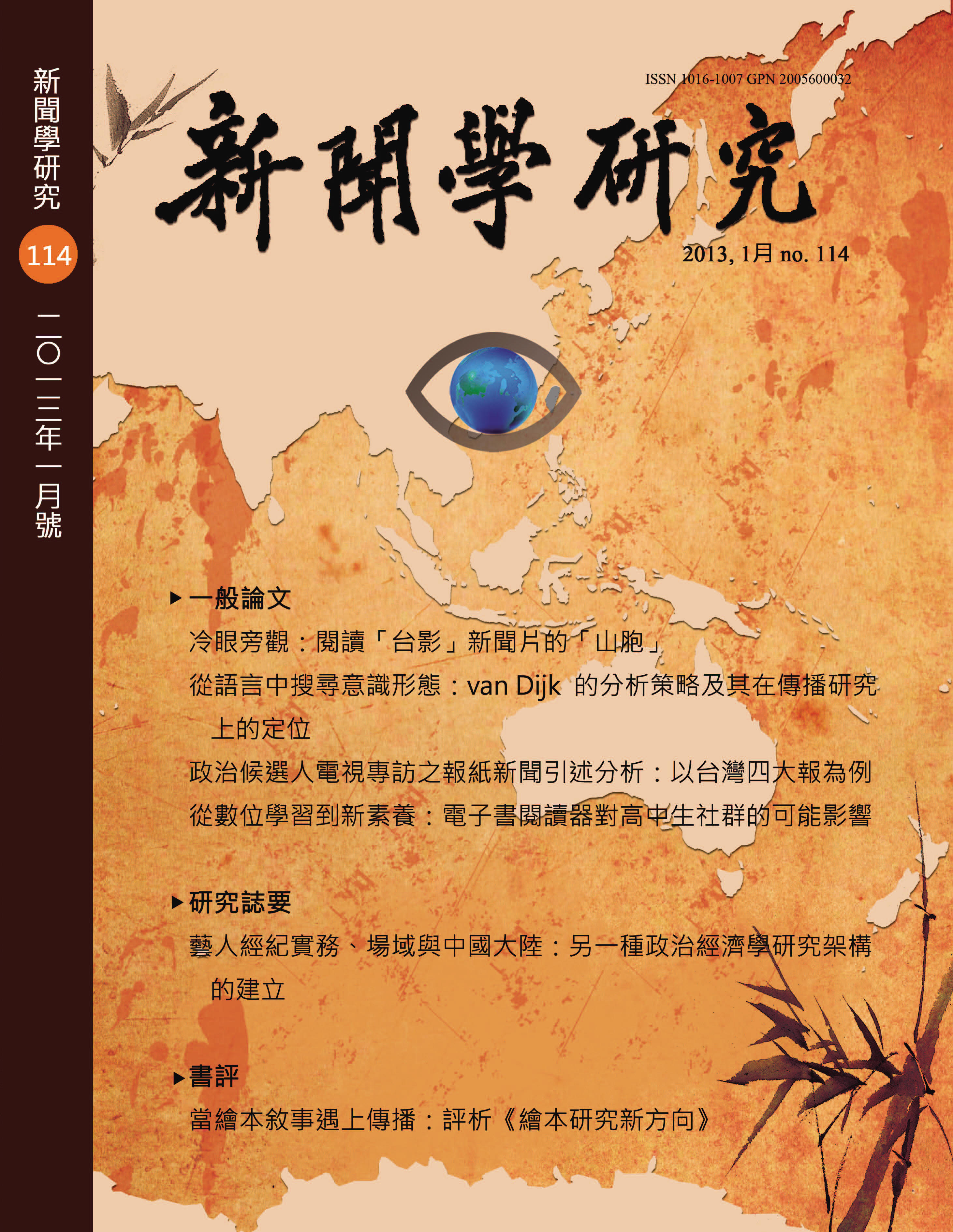前期出版
前期出版
頁數:1﹣39
冷戰之眼:閱讀「台影」新聞片的「山胞」
Cold War Eyes: Reading Aborigines in Taiwan Film Culture Company Newsreels
研究論文
作者(中)
蔡慶同
作者(英)
Chin-Tong Tsai
關鍵詞(中)
新聞學研究,政大
關鍵詞(英)
Aborigines, Non-fiction film, Newsreel, Scopic Regime, Taiwan Film Culture Company
中文摘要
台灣關於非劇情片與原住民之關係已多所討論,但對於1945年至1983年之間「台影」新聞片所再現的「山胞」,相關的討論、研究與反省則較為忽略。因此,本文以「台影」新聞片的「國內版」為對象,檢視「山胞」的意象所出現的數量、類型與詮釋之方式。針對「台影」新聞片所再現的「山胞」,我們指出包括主體的缺席、線性的進化、需要被現代化的原始、歌舞服裝作為社會皮膚、觀看的客體等等特點。最後,本文企圖從視覺政體的觀點出發,探討「台影」作為冷戰時期觀看社會的主要管道(「冷戰之眼」),如何透過新聞片的再現,進行「山胞」意象的社會建構,藉此提供一個批判性的分析。
英文摘要
Many researchers have investigated representations of aborigines in Taiwanese non-fiction film, but few have focused on Taiwan Film Culture Company newsreels from 1945 to 1983. This paper uses methods of content, frame, and narrative analysis to explore the frequency of appearance, categories, naming, and portrayals of aborigines under scopic regime of cold war eyes. The results show that Taiwanese aborigines are mostly represented without acknowledging their diversity and multiculturalism. Aborigines are interpreted on an evolutionism usually represented as primitives requiring modernization. Although aborigines are usually portrayed as primitives requiring modernization, this primitiveness is not abandoned. Aboriginal dances and clothes are treated as another type of social skin used in nationalism and tourism performances. Based on lines of sight, aborigines in the newsreels also are usually objects to be looked at. Thus, reading aborigines in Taiwan Film Culture Company newsreels manifests the meanings of de-colonization. This paper emphasizes the importance of making aborigines visible in mainstream media.
1035次下載



